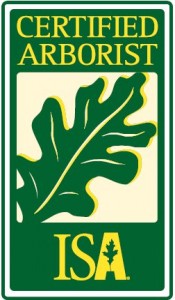What kind of tree do I have?
Do you know how to identify every tree on your property? Chances are for the common property owner this is a resounding “No.”
Identification of trees isn’t just a hobby, it is a very important skill when understanding how to care for them. That isn’t just something a professional tree service needs to know, but every property owner as well.
If you have a tree that is appearing unhealthy, it is important that you can accurately identify what kind of tree you have before you begin to explore options for fertilizing trees, spraying trees for insects and mites, or applying tree disease control applications. If you get the wrong tree, there is a highly likely chance that you’ll misdiagnose the problem, and either not solve it or make it worse.
It’s also very important to be able to identify your tree when considering hiring a tree trimming service to make sure you and they both know the specific pruning requirements for that species of tree.
Where to start?
Some trees are easy to identify because they are very unique. However, even within a species such as a Maple, you’ll want to be able to eventually get to the place where you can tell the difference from a Sugar Maple and a Red Maple. They’ll each have their own unique needs and challenges. Tree identification used to be a difficult task, but now with a little studying and a few online tools, it’s getting easier and easier.
 There are some important characteristics you’ll want to be familiar with first. These are the starting points for identification. Get familiar with these terms before you venture out.
There are some important characteristics you’ll want to be familiar with first. These are the starting points for identification. Get familiar with these terms before you venture out.
There are many tools used for identification. Whether using a book, a website, or an app on your phone, you’ll be guided through and “either-or” process where you are asked a series of questions such as, “Is the tree’s leaf Simple or Compound?” and “How many needles are in a cluster”, and so forth. They will also have some helpful pictures to help you.
Answering correctly to each of these questions will guide you further down the path of proper tree identification until you have your answer or a couple close possibilities. It’s even possible to identify trees in the dormant season when all the leaves aren’t present. This is a bit more challenging, but by identifying bud and bark characteristics, you can get pretty close.
Resources
There are a lot of great resources for identifying trees. Grab whatever suits you best and make sure it is made for the region of the country you live in, as there will be a lot of national species you won’t find in your climate. Getting the ID correct will lead you to the right answers of how to care for them. Here are some of our favorite resources:
- Leafsnap app
- “The Tree Identification Book” by George W. Symonds (you can find these books for sale online at your favorite site)
- “Tree Finder: A Manual for the Identification of Trees by Their Leaves” by May Theilgaard Watts (great small pocket book)
- “Winter Tree Finder: For Identifying Deciduous Trees in Winter” by May Theilgaard Watts and Tom Watts (great small pocket book)
 We hope these tools help you to get familiar with the trees around you. Another option would always be to call a tree service that employs Certified Arborists that can come out and not only identify your trees, but also discuss any care implications the trees may have to keep them healthy. If you need help with your trees, we’d love to send one of our tree experts to your property.
We hope these tools help you to get familiar with the trees around you. Another option would always be to call a tree service that employs Certified Arborists that can come out and not only identify your trees, but also discuss any care implications the trees may have to keep them healthy. If you need help with your trees, we’d love to send one of our tree experts to your property.


